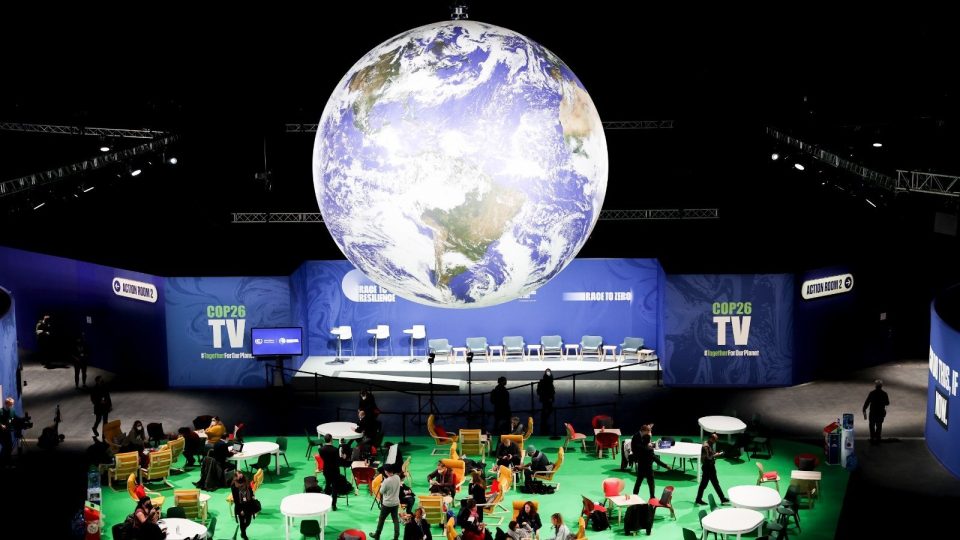
Climate deal in final stages, agreement on 1.5C temperature a bottleneck

While the final draft of the conference of parties (COP26) summit on climate change is yet to come out, countries seem to be heading towards an agreement on deciding the path to be chartered in the coming years to limit global temperature rise below 1.5 degrees Celsius.
The fortnight–long climate meeting started in Glasgow (UK) on October 31 and will conclude on November 12 (Friday). The main objective of the much-talked about summit is to seek commitments from all participating countries to limit CO2 and other greenhouse gas emissions and bring down earth’s temperature rise to 1.5C of the pre-industrial levels.
Discussions are still underway on how and when to reach the goal of 1.5 degrees C temperature control.
So, what does the 1.5C temperature threshold mean?
‘Pre-industrial levels’ could refer to any period of time before the start of the industrial revolution (1750-1850). Effectively it means the time before we started using machines and tools to help perform tasks en masse and with ease.
In 2017, human-induced warming reached approximately 1 degrees Celsius above pre-industrial levels. Which means the earth’s temperature reached 1 degree C above the temperature before 1750. At the present rate, global temperatures would reach 1.5C around 2040.
With a 1.5 degrees C increase, it is estimated that the Arctic Ocean will become ice-free in the summer about once every 100 years. With a 2 degrees C increase, the Arctic Ocean could become ice-free in the summer once every 10 years.
Goal to cut emissions by 45% by 2030 and to zero overall by 2050
All countries are required to submit their nationally determined contributions (NDCs) and start implementation before next year’s climate summit. It is mandatory for all countries to submit revised NDCs once every five years.
The climate deal, considered the next logical step to the historic Paris Agreement of 2015, can be sealed only if all countries reach an agreement. Meeting the goal requires global emissions to be cut by 45% by 2030 and to zero overall by 2050.
Also read: Study suggests different carbon costs for developed, emerging economies
The draft, which is being upgraded, urges nations to commit on phasing out coal power and come back for negotiations next year with better strategies on cutting greenhouse gases. Critics, however, say the administrators of COP26 have softened their stand on seeking commitments to reduce use of coal and other fossil fuels.
Climate financing
One big take away is on climate finance with developed nations likely to be compelled on fulfilling their promise of providing monetary compensation to poor and emerging nations to fight the climate crisis. Funds to be released for adapting to climate impacts are likely to be doubled from 100 billion dollars at present, and the baseline year will be 2021. This is critical because developed countries cause most greenhouse gas emissions, but it is the developing countries that bear the maximum brunt of climate change.
Also read: Webinar: How far should India commit to climate goals? Is it too late?
The BBC reported that negotiations could go late into Friday or even longer. Prof Jim Watson of the University College London told the British broadcast agency that the draft agreement had encouraging elements, but that overall it was “nowhere near ambitious enough”.
Objection to first draft
Scientists had objected to the first draft, called ‘cover document’, on Wednesday (November 10) with regards to 1.5C commitment. The text had said that the world should aim to keep global temperatures under this threshold “by 2100”. Experts at the IPCC [the UN’s Intergovernmental Panel on Climate Change] interpreted this as a leeway given to countries to let temperatures to go beyond 1.5 as long as they were brought back down by the end of the century. This portion of the text has been changed to “limiting temperatures to 1.5C.”
Highlights of COP26 (so far)
- India commits to net zero emissions by 2070
2. US and China agree to work jointly in this decade to limit global temperature rise to 1.5C
3. About 100 countries have committed to end and reverse deforestation by 2030
4. The US and the European Union initiated methane pledge, a voluntary promise to cut emissions of methane, a greenhouse gas, by 2030
5. Over 40 countries pledged to shun coal over the period of time, but China and the US, world’s top 2 users, did not agree to join

